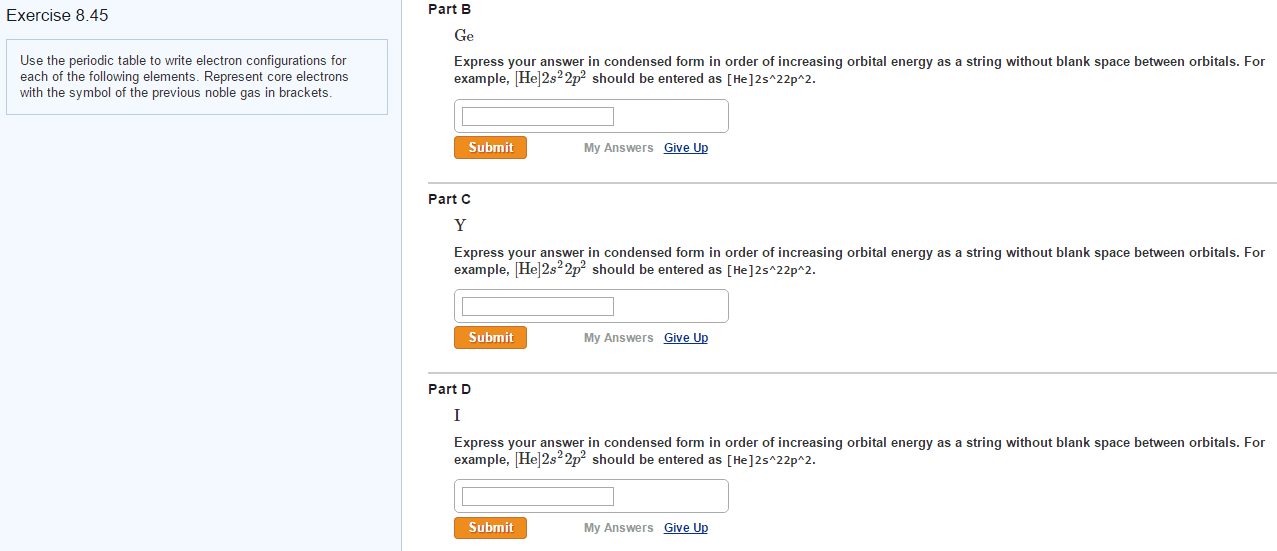Problem 6.69 Ions also have electron configurations (Section 7.4 in the textbook). Cations have fewer valence electrons, and anions have more valence electrons, respectively, than their parent atoms. For example, chloride, Clâ, has an electron configuration of 1s22s22p63s23p6, for a total of 18 electrons, compared to 17 for neutral chlorine, the element. Na has an electron configuration of 1s22s22p63s1, but Na+ has an electron configuration of 1s22s22p6. Write out the electron configurations for:
Part A Fâ Express your answer in condensed form in order of increasing orbital energy as a string without blank space between orbitals.
Part B Iâ Express your answer in condensed form in order of increasing orbital energy as a string without blank space between orbitals.
Part C O2â Express your answer in condensed form in order of increasing orbital energy as a string without blank space between orbitals.
Part D K+ Express your answer in condensed form in order of increasing orbital energy as a string without blank space between orbitals.
Part E Mg2+ Express your answer in condensed form in order of increasing orbital energy as a string without blank space between orbitals.
Part F Al3+ Express your answer in condensed form in order of increasing orbital energy as a string without blank space between orbitals.
Problem 6.69 Ions also have electron configurations (Section 7.4 in the textbook). Cations have fewer valence electrons, and anions have more valence electrons, respectively, than their parent atoms. For example, chloride, Clâ, has an electron configuration of 1s22s22p63s23p6, for a total of 18 electrons, compared to 17 for neutral chlorine, the element. Na has an electron configuration of 1s22s22p63s1, but Na+ has an electron configuration of 1s22s22p6. Write out the electron configurations for:
Part A Fâ Express your answer in condensed form in order of increasing orbital energy as a string without blank space between orbitals.
Part B Iâ Express your answer in condensed form in order of increasing orbital energy as a string without blank space between orbitals.
Part C O2â Express your answer in condensed form in order of increasing orbital energy as a string without blank space between orbitals.
Part D K+ Express your answer in condensed form in order of increasing orbital energy as a string without blank space between orbitals.
Part E Mg2+ Express your answer in condensed form in order of increasing orbital energy as a string without blank space between orbitals.
Part F Al3+ Express your answer in condensed form in order of increasing orbital energy as a string without blank space between orbitals.

